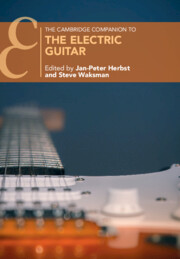Guitars Are Made for Men’s Bodies—Not This One: Designing the Glitterbomb for Female and Small-Frame Players
Demasculinizing an iconic Western symbol of masculinity is not an easy task. Perhaps it is an impossible one. Historically, electric guitar luthiers, “innovators and company executives were men,”1 and as such, guitars have always been designed by men, for men. As a female player, over the years, this presented numerous cultural and social problems—and technical ones, too.
Guitars—all guitars—felt awkward, ill-fitting, and painful to play. From a six-year-old struggling to reach the strings as my arm dug into the upper body side ribs of my dad’s Fender dreadnought, to the grazes on my left shoulder after hours of school cover band practice with a weighty Gibson Les Paul, the guitar strap cutting in deeper, scraping and chafing away with every struck chord. Eventually, at twenty years old, I settled on a humble Fender Bullet bought for £90 in Cash Converters on Kilburn High Road, London. As one of the smallest, lightest, cheapest, and most structurally basic guitars Fender ever made, its narrow neck and streamlined body made for more comfortable playing than anything else I’d encountered.2
Fast forward to 2016. My band, Glitoris, is signed to an independent label, and I am writing, recording, and touring nationally. The trusty Fender Bullet is getting a decent workout and holding up to the task, until one show in Naarm, when its bridge3 was damaged. After returning to Ngambri and calling around for a guitar tech, I found Rusty Vance, a well-known guitar luthier in the area. A conversation ensued, and after watching us play at the ANU [Australian National University] Bar that December, he offered to make me a custom guitar. Rusty was passionate about guitar design and, having constructed all kinds of electric guitars, from Gretch-like hollow bodies with f-shape cutaways, to much heavier, SG-style editions, Rusty was keen to address the absence of high-quality electric guitars for female, non-binary, and small-frame players.4
We set to work on what became the Glitterbomb.5 Much of the initial design was based on the dimensions of the Fender Bullet. The neck was the most important feature, and we settled on a light Queensland maple, reinforced with carbon fiber, and an African ebony fretboard, both of which are lightweight. The frets are narrow in spacing, and the action sits low with a graph tech nut cut for 52/10-gauge strings. The main body is a lightweight mahogany, and its pinched-in waist sits at 19 centimeters—the perfect dimension between my thigh and ribs for comfortable play when seated.
Wide necks, broad side body ribs, and overall weight are all technical barriers to women and small-frame players. However, the typical structure of the main electric guitar body itself and the way it digs into our breasts is perhaps the biggest—and most painful—impediment to playing. Many women guitarists have complained about this. As far back as 1997, Mavis Bayton6 included the testimonies of Frances Sokolov,7 Kate and Juliet from Oxford band Twist, and Anna from Sub Rosa, each of whom attested to the discomfort associated with large-bodied electric guitars digging in while playing. The Glitterbomb was designed specifically to address this major and prohibitive issue. The narrow waist combined with a large, scooped-out cutaway on the back of the upper body not only keeps the guitar well away from chest height, but also means its lower body “rolls” on—and around—the hip. Pelvic and rib bruises no more. Since owning this guitar, my playing has improved beyond recognition, simply because I am playing a comfortable guitar.
For me, playing the electric guitar is a creative necessity, as well as an act of reclamation. When I perform, the guitar is simultaneously a weapon and a shield; I am physically strengthened, empowered, and protected by it. The technical demasculinizing of the electric guitar is one means of dismantling “the patriarchal power structure” that dominates the electric guitar industry.8 Another means of undermining its masculinity is diverting from the homogenous, classic car-like ivories, reds, and sunburst color schemes by spraying the finished entity in bright green glitter. The guitar did, however, need a final hallmark, so we marked the fifth fret with a Glitoris signature in fluorescent, glow-in-the-dark Luminlay: \*/

